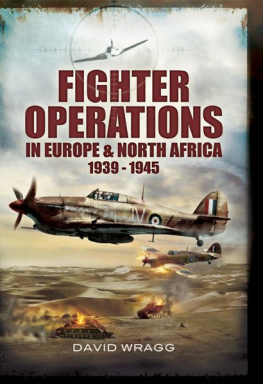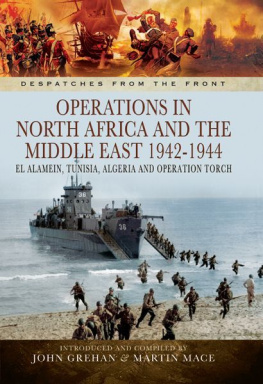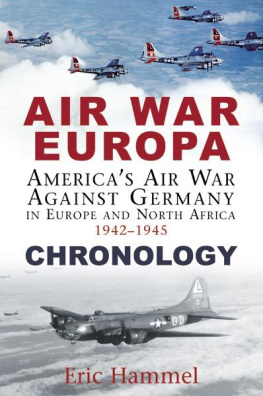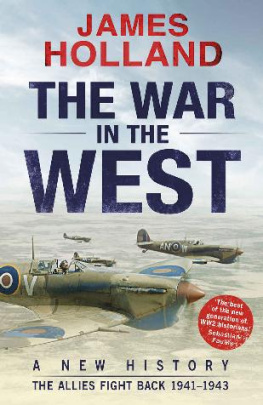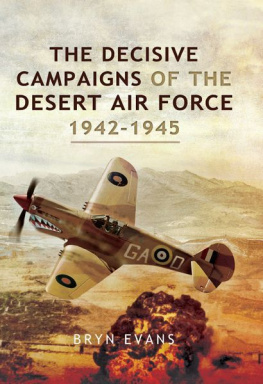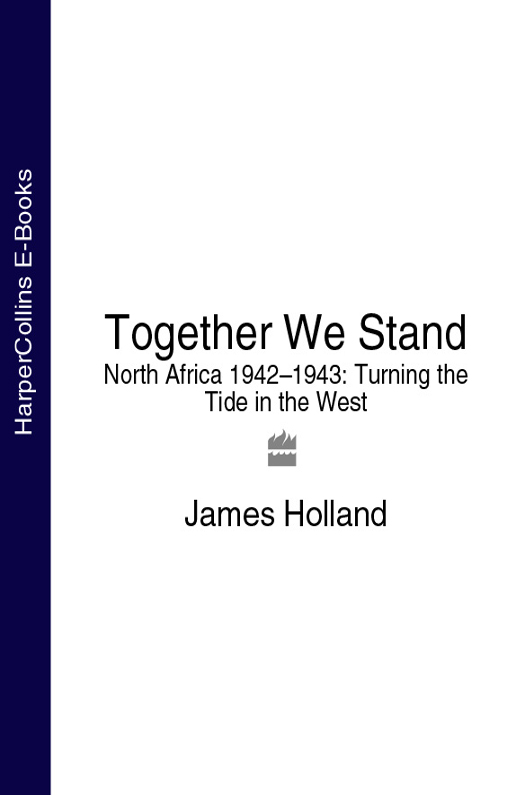CONTENTS
The author and publisher are grateful to the following for permission to use their copyright material:
Photograph Collection, Imperial War Museum, London
Plate section one: , bottom left (IWM NA2735), bottom right (IWM NA2675).
Still Pictures Unit of the Special Media Archives Services, National Archives & Records Administration, College Park, MD, USA
Plate section two: , top, middle.
Sherwood Rangers Yeomanry Museum
Plate section one: , top.
Hulton Archive/Gettyimages
Plate section one: , bottom right.
ww2images.com
Plate section one: , top (A09746P).
Alexander Turnbull Library
Plate section two: , middle right (DA-02197).
The remaining photographs are from the personal collections of:
Sam BradshawPlate section one: , top.
All parties above retain copyright.
Note: ranks given are those at the end of the North Africa campaign.
Private Johnny Bain British (Hertfordshire)
B Company, 5/7th Gordon Highlanders, 153rd Highland Brigade, 51st Highland Division, XXX Corps, Eighth Army. Johnny Bain arrived in the Middle East in September 1942.
Squadron Leader Tony Bartley British (London)
Commanding officer of 111 Squadron, flying Spitfires. Tony arrived in North Africa shortly after the TORCH landings and commanded 111 Squadron until his tour expired and he returned to England in January 1943.
Cecil Beaton (Wiltshire)
Photographer working for the Ministry of Information and in the Middle East, MarchJuly 1942, working principally on behalf of the RAF.
Privates First Class Henry and Tom Bowles American (Alabama)
18th Infantry Regiment, 1st Infantry Division, US II Corps, First Army. Identical twins, Henry and Tom Bowles volunteered to join the army before Pearl Harbor. Henry served in HQ Company, Tom in G Company.
Sergeant Sam Bradshaw British (Merseyside)
B Squadron, 6th Royal Tank Regiment, 7th Armoured Division, XIII Corps, Eighth Army. Sam Bradshaw joined the army in 1938 and arrived in North Africa in 1940. He served in all the major engagements right up to the Battle of Alamein in October 1942.
Bombardier Lieutenant Ralph Burbridge American (Missouri)
Bombardier of the All American, 97th Bombardment Group. Ralph Burbridge and the crew of the All American were one of the first B-17 crews to reach England in 1942 and flew in the first raid by the 97th over Europe in August 1942. The group was posted to North Africa in November 1942.
Commander Harry S. Butcher American (Iowa)
Old friend and naval aide to General Dwight D. Eisenhower. Butcher kept a diary throughout the planning of Operation TORCH and during the North Africa campaign.
Lieutenant Willie Chapman American (Texas)
415 Squadron, 98th Heavy Bombardment Group, USAAF. Willie Chapman joined the US Army Air Force in July 1941 and arrived in the Middle East in August 1942.
Flight Lieutenant Bryan Colston British (London)
225 Squadron, 242 Group, RAF. Joined the RAF in 1940 and on completing training was posted to 225 Army Support Squadron. Reached North Africa in November 1942.
Private Petrus Dhlamini Zulu (Natal)
Regiment President Steyn, 1st South African Division, XXX Corps, Eighth Army. Petrus Dhlamini reached the Middle East in June 1942 and returned home in January 1943.
Major Stanley Christopherson British (London)
Nottinghamshire Sherwood Rangers Yeomanry, 8th Armoured Brigade, 10th Armoured Division, X Corps, Eighth Army. Stanley Christopherson served in the yeomanry before the war and was called up on the outbreak of war in September 1939.
Squadron Leader Billy Drake British (London)
112 Squadron, 239 Wing, Desert Air Force. Billy reached North Africa in May 1942 and took over command of 112 Squadron until being posted in January 1943.
Sergeant Bill Eadie South African (Durban)
Brigade HQ, 2nd South African Infantry Brigade, 1st South African Division. Bill dropped rank from sergeant to corporal and switched regiments in order to serve in North Africa. He arrived in autumn 1941 and remained there until the division returned home to South Africa in January 1943.
Lieutenant Edward Duke Ellington American (Indiana)
65th Fighter Squadron, 57th Fighter Group. Duke Ellington was with the first American fighter pilots to reach North Africa, joining the RAFs Desert Air Force in August 1942.
Sergeant Ray Ellis British (Nottinghamshire)
425 Battery, South Notts Hussars, Royal Horse Artillery. Joined the regiment in 1938, reaching the Middle East in January 1940.
Lieutenant Warren Bing Evans American (South Dakota)
E Company, 1st Ranger Battalion, US II Corps, First Army; sergeant later battalion sergeant-major, then, in April 1942, given a battlefield commission and appointed company commander in newly formed 3rd Ranger Battalion. Bing Evans joined the Rangers, the US Armys first Special Forces, in February, 1942.
Flying Officer John Fairbairn British (Hertfordshire)
73 Squadron (Hurricanes). John Fairbairn was called up in 1940 and joined the RAF, becoming a fighter pilot. He reached North Africa in April 1942 and was posted to 73 Squadron in May 1942.
Private Joe Furaytor American (Pennsylvania)
Gunner with the 5th Field Artillery Battalion, Joe arrived in North Africa with the 1st Infantry Division and remained in North Africa until the end of the campaign.
Colonel John Frost British (born Poona, India)
Commanding officer, 2nd Parachute Battalion, First Army. Frost led the battalion from their arrival in North Africa shortly after the TORCH landings until the end of the campaign in May 1943.
Sergeant Harold Harper British (Nottinghamshire)
426 Battery, then 520 Battery, South Notts Hussars, RHA; July 1942, 107 Battery, 7th Medium Regiment, RA. Joined South Notts Hussars in 1939, reaching the Middle East in January 1940.
Lieutenant Stephen Hastings British (London)
2nd Battalion, Scots Gaurds and SAS. Commissioned into the Scots Guards in 1939, joining Eighth Army in early 1941. Joined SAS in May 1942.
Lieutenant Margaret Hornback American (Kentucky)
A nurse with the 48th Surgical Hospital (later 128th Evacuation Hospital), she landed with the 1st Infantry Division and remained in North Africa until the end of the campaign.
Lieutenant-Colonel Hamilton Howze American (New York)
Assistant Chief of Staff G-3, HQ 1st Armored Division, US II Corps, First Army. Hamilton Howze reached North Africa as part of the TORCH Landings in November 1942. In April he became attached to the 81st Reconnaissance Battalion, then on 3 May took over command of the 2nd Battalion 13th Armored Regiment.
Pilot Officer Christopher Lee British (London)
Intelligence Officer with 37 Squadron, 231 Wing, 205 Group, RAF Western Desert Air Force.
Corporal Joe Madeley Australian (New South Wales)
A Company, 2/13th Battalion, 9th Australian Division, XXX Corps, Eighth Army. Joe Madeley reached the Middle East in 1941.
Sergeant Albert Martin British (London)
A Company, 2nd Battalion Rifle Brigade, 7th Motor Brigade, X Corps, Eighth Army. An East Ender, Albert Martin arrived in North Africa in September 1940 and fought with the Rifle Brigade throughout the three years the Desert Rats were in North Africa.

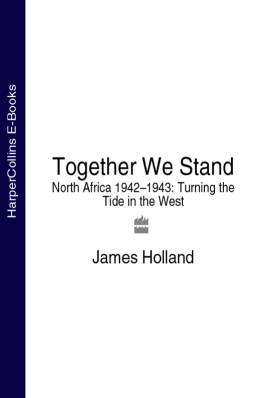
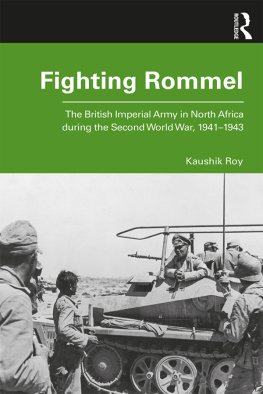


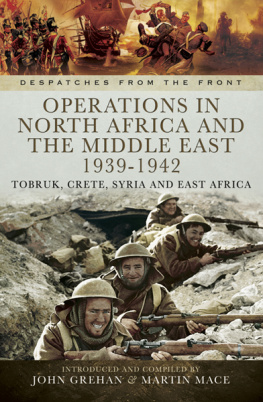
![Atkinson - An army at dawn: [the war in North Africa, 1942-1943]](/uploads/posts/book/178818/thumbs/atkinson-an-army-at-dawn-the-war-in-north.jpg)

